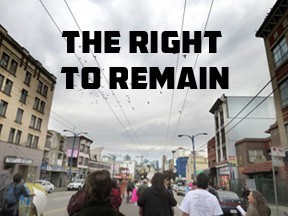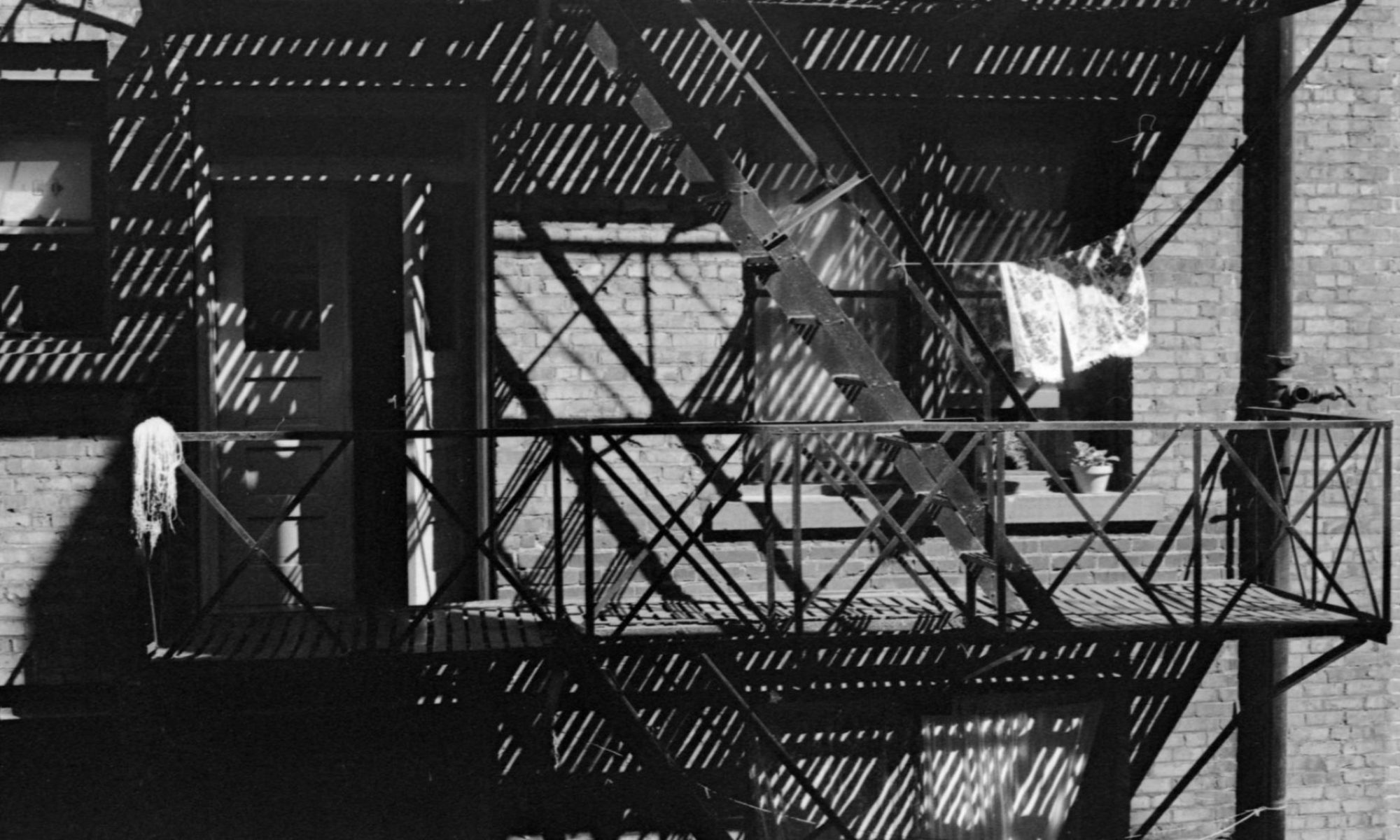“The right to remain” emerged as a key concept from a previous research project, originally titled Revitalizing Japantown?, which critically examined toponyms in the urban neighbourhood of the Downtown Eastside, particularly in light of efforts to supposedly “revitalize” the neighbourhood of Paueru-gai (“Powell town”), where the largest Japanese Canadian community in Canada lived prior to 1942. (It was during this year that the federal government passed the order-in-council under the War Measures Act that led to the violent dispossession, displacement, and internment of approximately 22,000 Japanese Canadian people).

While this concept of “the right to remain” was first formulated as an over-arching theme from interview analysis (2012-2013), due to its force in conveying people’s felt and lived experiences, by the spring and summer of 2014, “the right to remain” became the focus of community workshops led by local artist-residents. The concept has since formed the basis of two exhibits showcased at our current (and past) partners’ venues, at Gallery Gachet and at the Nikkei National Museum & Cultural Centre. In addition, this became the title of the documentary (The Right to Remain) created by filmmaker Greg Masuda as a part of and alongside the original project.
What we learned about “the right to remain”:
The Revitalizing Japantown? revealed “the right to remain” as an activist counter-brand confronting the market-based revitalization of the Downtown Eastside, particularly as it was (and, to some extent, is still) occurring under the auspices of an appropriated “Japantown.” This work surfaced:
– the existential right to be free from oppression;
– the material right to the basic necessities of life;
– the cultural right to sustain a community;
– and the political right to access democratic mechanisms that protect human rights.
Why we kept going with The Right to Remain:
Even as “the right to remain” became an activist frame of reference, it continued (and continues) to be violated, most grievously against the 3,600 people who are the most precariously-housed in privately-owned SROs, a notorious but diminishing housing stock paradoxically cited as our nation’s “slum” as well as the “the last step before homelessness”. Despite years of tepid efforts by the city to mitigate the conversion of SROs, landlords continue to act with impunity in forcing tenants to live under the harshest conditions, harassing them, demanding sex for rent, setting fires, and raising rents before finally and often illegally “renovicting” or “demovicting” tenants in a final act of dispossession.

